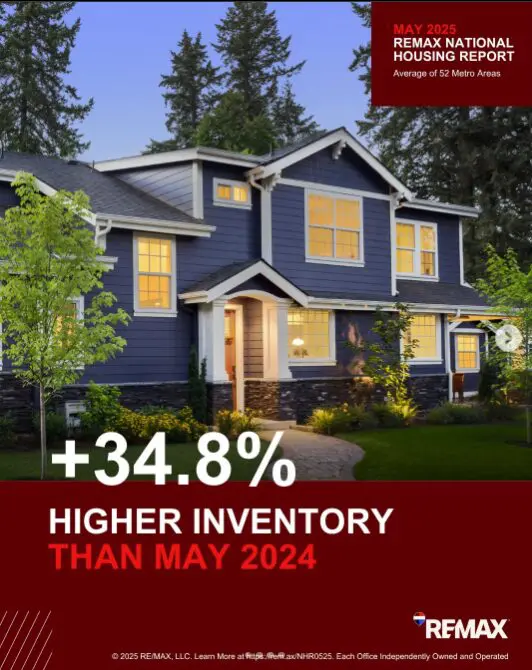Is the rising housing inventory good news for realtors? With housing inventory levels increasing, it’s crucial to understand what this means for realtors and homeowners. When more homes are available, it can shift market dynamics, impacting home prices and selling timeframes.
For homeowners, higher inventory means more competition. For realtors, it’s an opportunity to guide clients through a changing market.
This post will explore how these shifts affect both parties and why it matters. Stay tuned to discover how to navigate the ups and downs of rising inventory levels and make informed decisions.
What Are Housing Inventory Levels?
Understanding housing inventory levels is crucial for anyone involved in real estate, whether you’re a homeowner, a realtor, or someone looking to invest. Let’s break it down.
The Definition and Significance of Housing Inventory Levels
Housing inventory level refers to the number of homes available for sale in a given market at any given time. This metric is commonly measured by tracking how many months it would take to sell all the houses on the market based on the current sales pace.
The “months of inventory” is a popular term you’ll hear, and it essentially tells us about the market’s balance.
Why does this matter? Well, inventory levels have a direct impact on home prices and market activity.
When inventory levels are low, there aren’t many homes to choose from, and this often leads to bidding wars, driving prices up. Conversely, high inventory levels mean more choices for buyers and can lead to price reductions.
For real estate professionals, understanding these levels helps in advising clients accurately. For instance:
- Sellers benefit from low inventory as it can lead to higher sale prices.
- Buyers benefit from high inventory as it gives them more negotiating power.
- Realtors can strategize marketing efforts and set realistic expectations for clients based on these trends.

Current Trends in Inventory Levels
In recent times of 2025, there has been a noticeable increase in housing inventory levels. What does this mean for the market? Let’s dive into some statistics and trends.
According to recent reports, many areas are seeing an uptick in the number of homes listed for sale. This shift is significant for several reasons:
- Increased Supply: More homes on the market translate to more options for buyers.
- Price Corrections: With an increase in inventory, there might be a slowdown in the rapid price increases we’ve seen in recent years.
- Market Balance: Higher inventory levels could bring more balance to the housing market, reducing the pressure on buyers and sellers.
Consider the following points:
- Recent Data: Over the past six months, inventory levels have risen by about 15% in major metropolitan areas.
- Regional Variances: While nationally, inventory levels are up, some regions are experiencing more dramatic changes. For example, coastal cities often have fluctuating inventories due to seasonal demand.
- Economic Factors: Rising interest rates and economic uncertainty are causing some sellers to list their homes, boosting inventory further.
These trends indicate that the market might be shifting towards a more balanced state. As a realtor, keeping an eye on these statistics can help you provide better advice to your clients.
Understanding housing inventory levels and current trends equips you with the knowledge to navigate the market effectively. Whether you’re buying, selling, or advising, this insight is invaluable.
Impact of Rising Inventory Levels on Realtors
When housing inventory levels go up, realtors experience both opportunities and challenges. Understanding these impacts can help realtors navigate the market better and serve their clients more effectively.
Opportunities for Realtors
With higher inventory levels, realtors can find more ways to thrive. Here are some significant benefits they can enjoy:
- Increased Property Selection for Buyers: With more homes on the market, buyers have a wider variety to choose from. This makes it easier for realtors to match clients with their dream homes. When buyers have choices, they feel more empowered, and happy clients are more likely to refer friends and family.
- Opportunities to List More Homes: An increase in inventory means more opportunities for realtors to get listing agreements. This can lead to a larger portfolio and increased exposure in the market. More listings also provide more chances to attract potential buyers, leading to quicker sales and higher commissions.
- Negotiation Lever: With more properties available, buyers might be willing to negotiate more, which gives realtors the ability to showcase their negotiation skills. This can result in favorable deals for both buyers and sellers, enhancing the realtor’s reputation.
Challenges Faced by Realtors
While rising inventory levels open doors, they also come with their set of hurdles. Here are some of the main challenges realtors might face:
- Increased Competition: More homes on the market mean that realtors have to work harder to make their listings stand out. This involves more marketing efforts, competitive pricing strategies, and excellent customer service. If numerous homes have similar features, it becomes crucial to highlight unique selling points.
- Potential Price Reductions: With increased supply, the balance can tip in favor of buyers, leading to potential price drops. Realtors might have to advise sellers to lower their asking prices to stay competitive. This can be a tough conversation, especially if sellers have strong expectations about their property’s value.
- Longer Days on Market: Higher inventory can mean that homes take longer to sell. This might frustrate sellers and pressure realtors to find innovative ways to speed up the selling process. Prolonged listings can lead to additional costs for marketing and maintaining homes in a show-ready state.
Navigating the ups and downs of rising inventory levels requires a proactive mindset and strategic planning. By understanding these opportunities and challenges, realtors can better serve their clients and sustain their business through market fluctuations.
How Homeowners Can Benefit from Higher Inventory Levels
When the housing inventory level rises, it brings various benefits for prospective buyers. Homeowners stand to gain a lot from higher inventory as well. Here’s how:
Greater Choice for Buyers
A larger inventory gives homeowners more options to explore. Having a variety of homes on the market means buyers can be pickier about what they want. Do you need an extra bedroom or a bigger yard? With more homes available, you’re more likely to find the perfect fit.
- More Listings: There are simply more homes to look at, increasing the chances of finding one that meets all your needs.
- Different Styles: You get a broader range of architectural styles, from modern condos to classic single-family homes.
- Varied Neighborhoods: More homes are available in different areas, giving you the freedom to choose a neighborhood that suits your lifestyle.
Negotiating Power Strengthened
With an increased inventory level, the bargaining power shifts more towards buyers. Sellers are aware that buyers have more choices, which makes them more willing to negotiate terms.
- Better Prices: More competition among sellers can drive prices down, giving buyers an edge to secure homes at lower costs.
- Flexible Terms: Sellers may be more open to negotiating closing dates, and repairs, or even covering some of the closing costs.
- Incentives: To make their homes stand out, sellers might offer incentives like home warranties or upgraded appliances.
A higher housing inventory level means more options and stronger negotiating power. Homeowners looking to buy can seize these opportunities to secure their dream home more easily and on better terms.
Strategies for Realtors in a Changing Market
With inventory levels on the rise, realtors need to adapt and innovate to stay ahead. Adapting to market shifts isn’t just about reacting; it’s about being proactive and finding ways to make listings stand out.
It’s also about building stronger relationships with clients to ensure long-term success. Here are some strategies to help realtors thrive in this changing market.
Marketing Unique Features
One of the best ways to make a home stand out in a crowded market is to highlight its unique features. Whether it’s a stunning view, an upgraded kitchen, or a spacious backyard, these elements can capture a buyer’s attention. Here are a few strategies that can help:
- High-Quality Photos and Videos: Invest in professional photography and videography to showcase the property’s best features. High-quality visuals can make a significant difference in attracting potential buyers.
- Virtual Tours: Offer virtual tours to provide a realistic feel of the home. This can be especially appealing to buyers who cannot visit in person immediately.
- Detailed Descriptions: Write compelling descriptions that highlight what makes the property special. Focus on features that differentiate it from other listings.
- Social Media Promotion: Use social media platforms to share unique aspects of the property. Engaging posts and stories can reach a broader audience.
By emphasizing what makes each listing unique, realtors can better compete in a market with rising inventory levels.
Building Stronger Client Relationships
Nurturing relationships with clients is crucial, especially during market shifts. Clients need to feel supported and informed throughout the process. Here’s how to build stronger connections:
- Constant Communication: Keep clients updated with regular check-ins through calls, emails, or text messages. They need to know you’re actively working on their behalf.
- Personalized Service: Understand each client’s specific needs and preferences. Tailor your approach to meet those needs, showing that you value their business.
- Educational Resources: Provide clients with valuable insights and resources about the market. Help them understand current trends and inventory levels to make informed decisions.
- Client Appreciation Efforts: Small gestures like thank you notes, holiday cards, or even client appreciation events can go a long way in showing your clients that you care.
Building strong relationships isn’t just good for your current transactions; it’s an investment in future referrals and repeat business. As inventory levels rise, having loyal clients can give you a significant advantage.
By focusing on these strategies, realtors can effectively navigate a market with rising inventory levels and build a thriving real estate business.
Looking Ahead: Future of Housing Inventory Levels
Understanding what lies ahead in the housing market is essential for both realtors and homeowners. The past few years have shown us just how quickly conditions can change. Let’s dive into key factors and predictions for housing inventory levels.
Economic Factors Influencing Inventory
Economic indicators play a huge role in shaping housing inventory levels.
- Interest Rates: When interest rates are low, borrowing is cheaper. This generally boosts homebuying activity as more people can afford loans. Conversely, high interest rates can cool the market by making mortgages more expensive.
- Employment Rates: A strong job market means more people have the financial stability to buy homes. Higher employment rates can lead to increased demand but can also mean more new constructions as builders respond to market needs.
- Inflation: Inflation impacts the cost of building materials and homes. High inflation can raise home prices and construction costs, potentially reducing inventory as builders hesitate to start new projects.
These are just a few pieces of the economic puzzle. Keeping an eye on these factors helps predict market movements.
Predictions for the Market
Experts offer mixed predictions on where the housing market is headed, but a few key trends stand out.
- Increased Urban Demand: As remote work becomes more common, people may seek homes in urban areas again, looking for vibrance and convenience. This could drive up demand and reduce inventory in cities.
- Suburban Expansion: Many families may continue to prefer suburban areas for more space and better schools. This could lead to new housing developments and potentially stabilize inventory levels in these regions.
- Technological Impact: Advances in real estate tech make it easier to list and find homes quickly, possibly smoothing out fluctuations in inventory levels. Tech can also help realtors match buyers to homes faster, reducing time homes stay on the market.
- Sustainability Trends: With rising awareness about climate change, there may be a push for more eco-friendly homes. This trend could influence the types of properties built and available, slightly shifting the inventory landscape.
In summary, while it’s hard to predict with absolute certainty, understanding these factors and trends can help realtors and homeowners plan for the future.
Conclusion: Housing Inventory Levels
A rising inventory level offers a promising outlook for both realtors and homeowners. Realtors can capture new opportunities through increased listings, while homeowners gain greater market options.
Staying informed about inventory trends is crucial. This knowledge empowers better decision-making and strategic planning.




